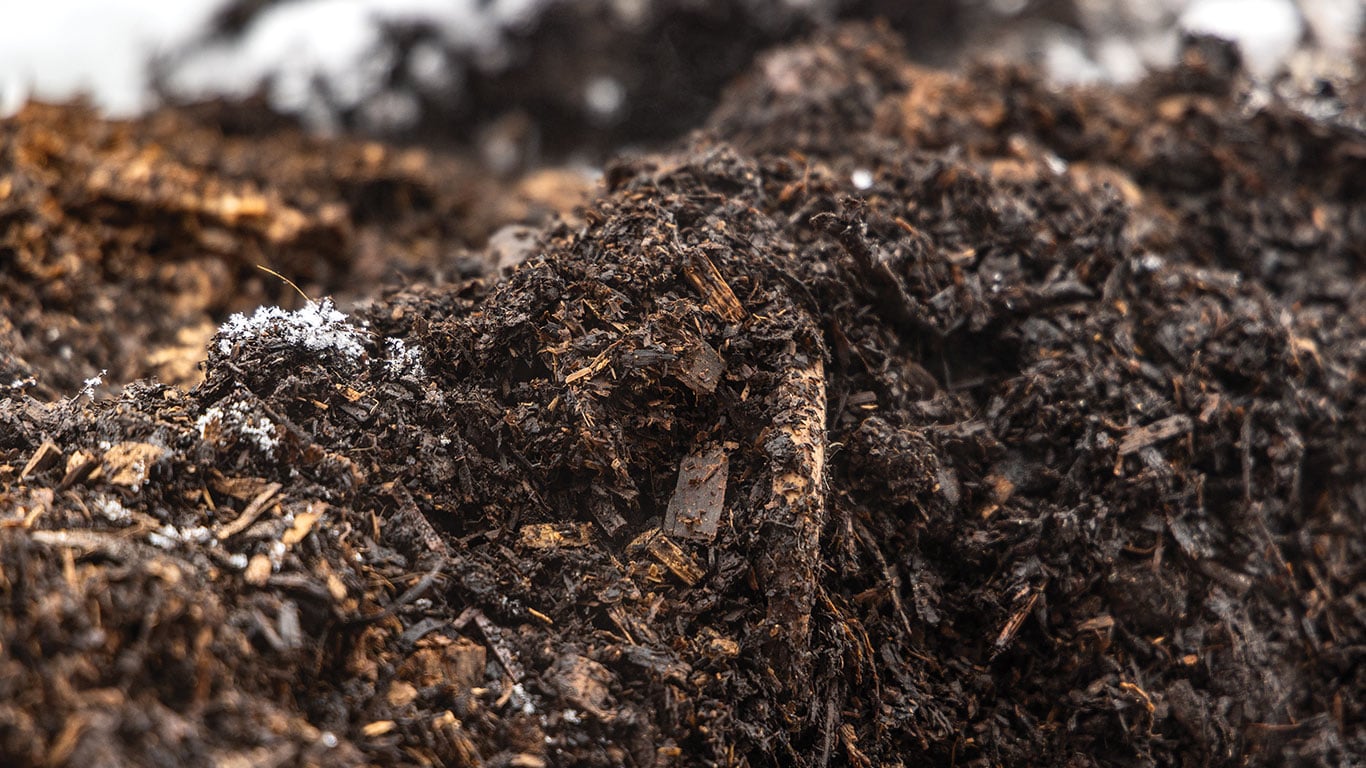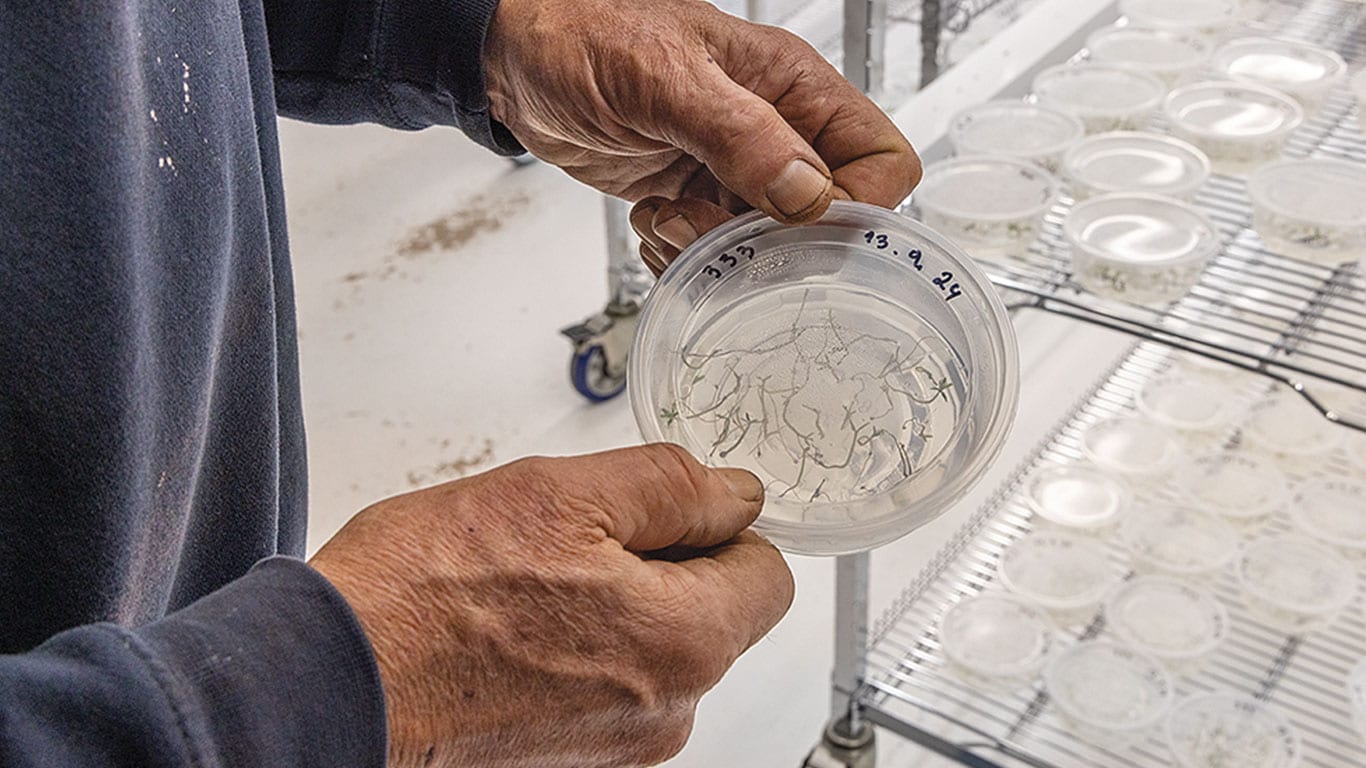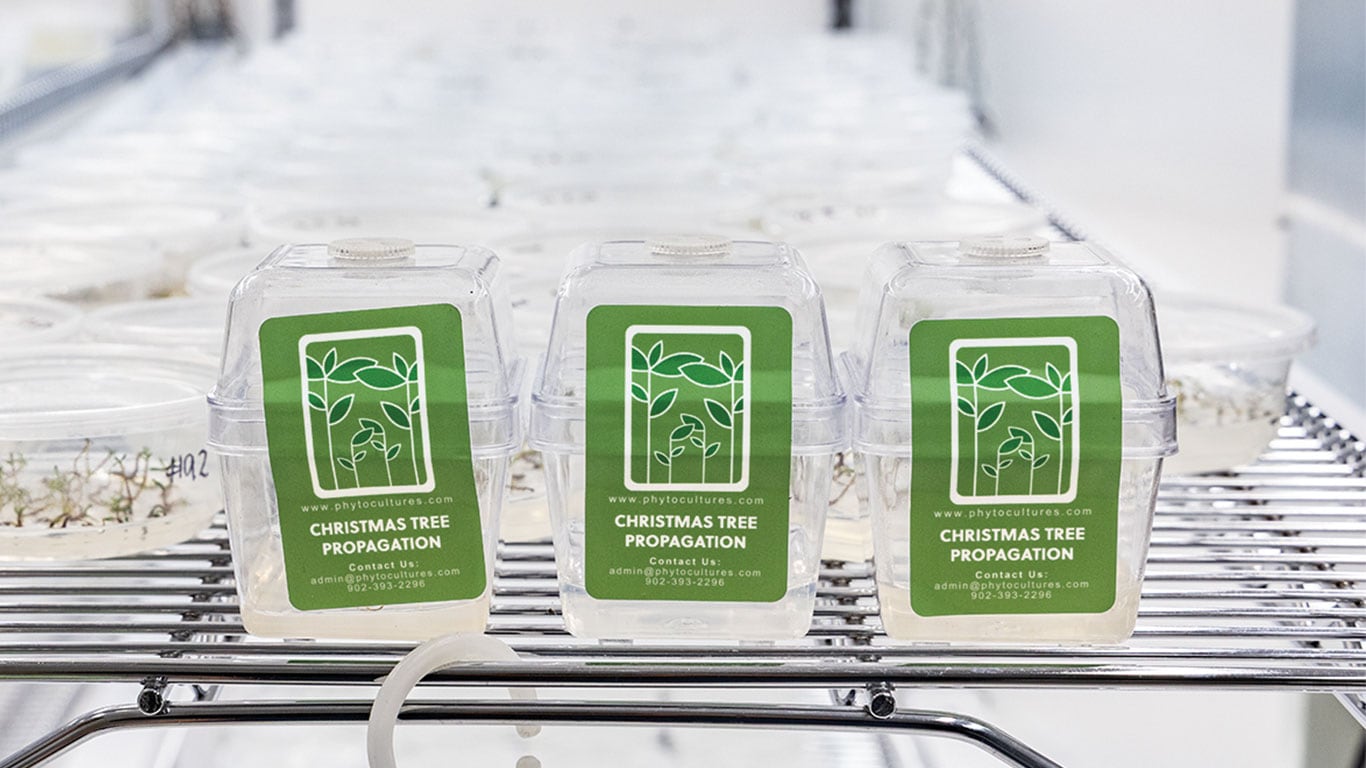Agriculture, Education November 01, 2025
Phytoculture Replication
Canada farmer takes a high-tech path to farming.
Story and Photos by Lorne McClinton
Most farmers in Canada have a legacy family farm to use as a launch pad. But Don Northcott's father was in the Royal Canadian Mounted Police and his mother was a civil servant, so that route was never in the cards for him. Despite his burning desire to be a farmer he knew he'd have to find another way to wedge himself into the industry. He found his opportunity in a Petri dish.
Don Northcott isn't what most people picture when they think of a farmer. He doesn't own lots of acres of land or run a combine. But he's farming just the same.
Northcott works at the cutting edge of plant science on his small farm, greenhouse, and lab operation, Phytocultures Ltd., in Clyde River, Prince Edward Island (PEI), to multiply elite seed potato varieties for potato growers across North America and around the world. His secret? Tissue culture—a lab-based propagation technique that allows him to multiply a single potato plant by a factor of ten every month.
"If we start with a mature, disease-free vegetatively propagated plant [like potatoes] and chop it into 10 pieces on January 1st, by February 1st you'll have ten plants," Northcott says. "If you chop each of those plants into 10 pieces, you'll have 100 plants by March 1st, and 1,000 plants by April 1st. We'll grow these out to produce mini-tubers. We can turn a pound of mini-tubers into a full tractor-trailer load in four years."
Above. Don Northcott extracts Christmas tree embryos from seeds and then clones using somatic embryogenesis. A portion of these are preserved in liquid nitrogen and the rest will be grown into trees in their nursery.
Northcott started working in tissue culture propagation in the 1980s when the process was first being developed for potato reproduction while he was working for the PEI Potato Board. He went out on his own and developed small laboratory kits for plant propagation that he sold to potato companies in 25 countries around the world.
He constantly keeps his eyes open for other crops to work with. For example, he's partnered with Dalhousie University to produce a better Christmas tree. He's cloning seed embryos using a technique called somatic embryogenesis. Christmas tree exports have been a big business in Nova Scotia for a century. Now trees are cut in October, wrapped, put in refrigerated containers, and shipped as far away as Dubai. But a percentage of trees will drop all their needles as soon as they are unwrapped at their destination. If it happens too often, exporters have lots of unhappy customers.
Most Christmas trees are grown from seed collected from wild trees. Only 20 percent of trees grown from seed collected from a wild stand will become the most profitable premium trees. So Northcott is working with Dalhousie University and tree growers to ensure that any elite genetics they select for are repeatable and scalable.
The process is painstaking. First, breeders cross two superior trees. Then, before the seeds harden, Northcott extracts tiny embryos (called a callus) that look like fuzzy masses of cells and prompts them to grow—not into trees, but into undifferentiated fuzzy masses of cells. Each of these cells has the potential to become an exact copy of the original tree.
A portion is preserved in liquid nitrogen and set aside. The rest are nudged to become embryos and ultimately become trees in the nursery. Their nursery can easily contain hundreds of different lines of clones after a few years.
"Say Clone number 52 is evaluated, and is determined to have the nicest color, shape, and the best needle retention characteristics," Northcott says. "We can go back to the liquid nitrogen tank, and retrieve Clone 52, and then induce it to produce callus again. These can then be used to produce hundreds of thousands of identical copies of Clone 52."
This has real world implications for farmers' bottom lines. A recent study from North Carolina State University estimated that an acre of improved, cloned Christmas trees could earn double what standard plantings might bring in after 8–10 years.
Northcott took a high-tech path into agriculture. It's micro-scale, knowledge-driven, globally connected, and it's profitable. It also shows that a farmer's greatest asset might be what's between their ears. ‡
Read More

AGRICULTURE, SPECIALTY/NICHE
Winter Rhubarb?
Ontario farm's early fresh treat fills the hunger gap.

AGRICULTURE, FARM OPERATION
Bring Out Your Dead
Deadstock composter turns livestock into potting soil.




